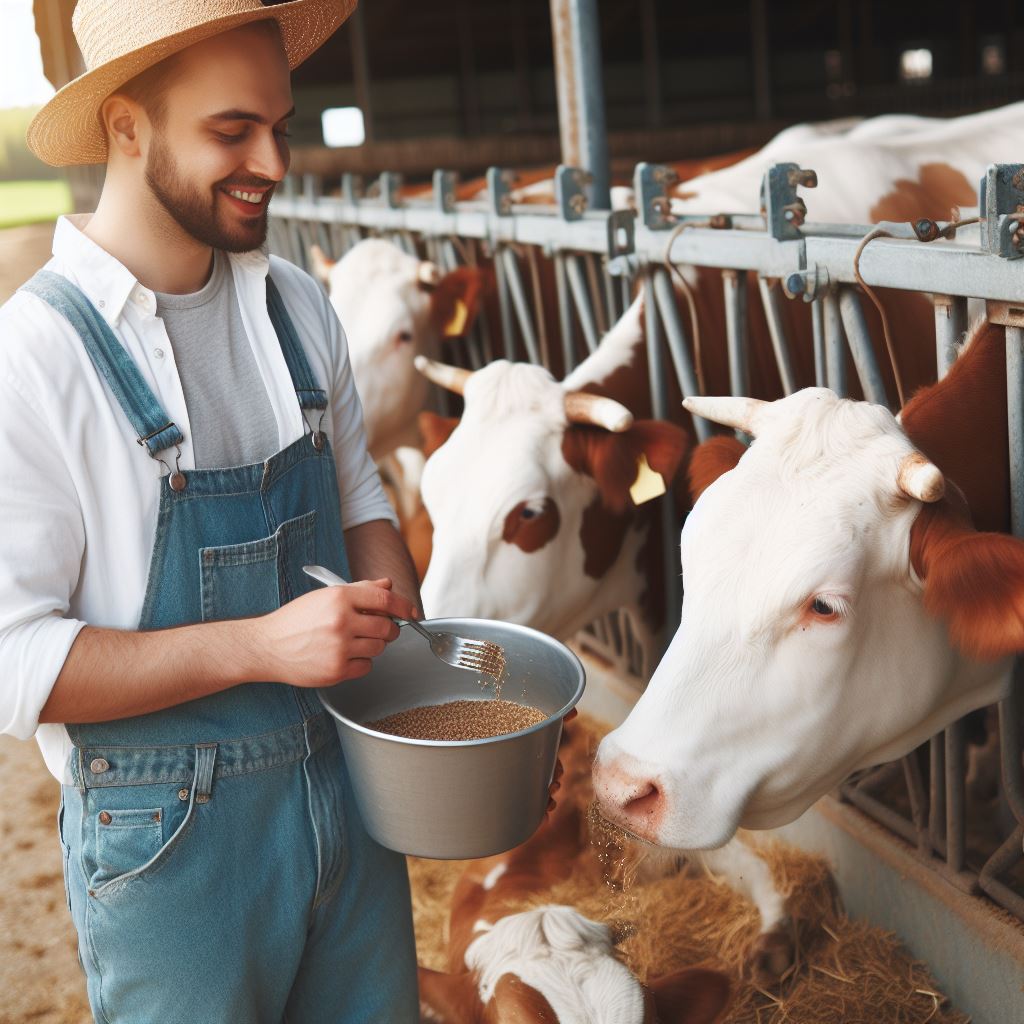Introduction
Urban farming can have a significant impact on reducing food miles and benefiting the environment.
Urban farming is the practice of cultivating, processing, and distributing food in or around urban areas.
Reducing food miles is important because it reduces greenhouse gas emissions and improves food security and access.
Food miles refer to the distance that food travels from the farm to the consumer.
By growing food locally, urban farming reduces the need for long-distance transportation, thus lowering carbon emissions.
Additionally, urban farming helps to increase food access for communities with limited access to fresh produce.
Freshly harvested produce is more nutritious and has a higher quality compared to food that has traveled long distances.
Moreover, urban farming enhances food sovereignty, as it allows communities to have control over their food production and consumption.
It promotes sustainable agriculture practices such as organic farming, permaculture, and hydroponics.
Furthermore, urban farming provides economic opportunities, creates green spaces, and strengthens community bonds.
In short, urban farming plays a vital role in reducing food miles and offers numerous benefits for both the environment and communities.
Explanation of food miles and their environmental impact
Definition of food miles
By understanding the definition of food miles and their environmental impact, it becomes apparent that reducing food miles is crucial for sustainability and overall well-being.
The consequences of long food miles are far-reaching and demand attention.
Discussion on the environmental consequences of long food miles
The transportation of food over long distances significantly contributes to increased carbon emissions.
Fossil fuels burned during transportation release harmful greenhouse gases, exacerbating global climate change.
Transform Your Agribusiness
Unlock your farm's potential with expert advice tailored to your needs. Get actionable steps that drive real results.
Get StartedBy consuming locally grown food, individuals can mitigate this negative environmental impact.
Additionally, extensive transportation leads to the depletion of natural resources.
Shipping food across countries and continents requires vast amounts of energy, further degrading the environment.
This depletion is an unsustainable practice that must be addressed.
Statistics and examples to emphasize the magnitude of the issue
The magnitude of the issue is best illustrated through statistics and examples.
For example, the average plate of food in the United States has traveled 1,500 miles before reaching its destination, highlighting the immense distance food can travel.
Furthermore, transportation emissions account for approximately 11% of global greenhouse gas emissions, emphasizing the significant role of food miles in climate change.
The diversification of food sources also highlights the issue at hand.
The average American meal contains ingredients sourced from at least five different countries, indicating the extensive global reach of the food system.
This interconnectedness contributes to the carbon footprint associated with food miles.
Lastly, the nutritional implications of long food miles cannot be overlooked. Fresh produce picked early to withstand transportation often lacks the same nutritional value as locally grown alternatives.
This diminishes the overall quality and health benefits of the food consumed.
In fact, food miles have a considerable environmental impact that cannot be ignored.
Increased carbon emissions, depletion of natural resources, and the amplification of climate change are just a few of the repercussions of long food miles.
By understanding the magnitude of the issue through statistics and examples, individuals can make more informed choices to reduce their contribution to this problem.
Opting for locally sourced food is one of the most effective ways to reduce food miles, support local economies, and promote a more sustainable future.
Read: Precision Agriculture: Cut Emissions Now
Overview of Urban Farming as a Solution to Reduce Food Miles
Urban farming refers to the practice of growing food within cities, using available spaces like rooftops, balconies, or empty lots.
It is a sustainable way to produce fresh, organic food right where it’s needed, reducing the distance between farm and table.
Definition and Description of Urban Farming
Urban farming involves cultivating crops and raising livestock in urban areas, making use of small spaces and innovative techniques such as hydroponics or vertical farming.
It promotes self-sufficiency and encourages community involvement in food production.
Benefits of Urban Farming in Reducing Food Miles
- Shorter transportation distances: With urban farming, the distance between the source of food and consumers is significantly reduced. This reduces the need for long-haul transportation, saving energy and reducing carbon emissions from trucks or planes.
- Fresher and healthier produce: Since urban farms are located near urban areas, produce can be harvested when it is at its peak ripeness. This means it can be sold or consumed immediately, resulting in fresher and more nutritious food on the table.
- Increased local food security: Urban farming helps decrease reliance on imported food, making communities more resilient and less vulnerable to disruptions in the global food supply chain. It ensures a steady supply of fresh produce, even during times of crisis.
Examples and Success Stories of Urban Farming Initiatives Around the World
Urban farming initiatives have gained popularity and success in various cities worldwide. Here are some notable examples:
- In Detroit, Michigan, the urban farming movement has transformed vacant lots into thriving urban gardens. These farms help to address the food desert issue and provide job opportunities for local residents.
- Cuba’s “Organopónicos” system is a prime example of urban farming in a resource-constrained environment. In response to economic challenges, Cubans began growing crops using organic and sustainable practices within their cities, ensuring food self-sufficiency.
- The “Gardens by the Bay” project in Singapore showcases urban farming on a grand scale. The city-state has integrated vertical farming into its urban design, resulting in abundant food production and improved food security.
These examples demonstrate that urban farming is a viable solution for reducing food miles and creating local, sustainable food systems.
By promoting community engagement and utilizing underutilized spaces, urban farming empowers individuals and communities to take control of their food production, improve access to fresh produce, and reduce their environmental impact.
Showcase Your Farming Business
Publish your professional farming services profile on our blog for a one-time fee of $200 and reach a dedicated audience of farmers and agribusiness owners.
Publish Your ProfileRead: Cover Cropping: Shield Against Carbon
Challenges and Considerations in Implementing Urban Farming Practices
Limited space in urban areas
- Urban areas often lack sufficient land and space for large-scale farming operations.
- High population density and competition for space make it challenging to find suitable locations.
- Vertical farming and rooftop gardens are potential solutions to maximize available space for cultivation.
- Creative urban planning and innovative designs can help overcome the space limitations.
- Collaborative efforts between urban farmers and city authorities are crucial in identifying optimal farming locations.
Potential issues with soil quality and contamination
- Urban soils are often contaminated with pollutants, heavy metals, and chemicals from industrial activities.
- Farmers need to assess and improve soil health through soil testing, remediation, and organic farming practices.
- Urban farmers may need to import soil or use raised beds with amended soil for safer cultivation.
- Regular monitoring and soil management are necessary to ensure crops are not affected by contaminants.
- Urban farming can serve as a catalyst for urban soil remediation and environmental awareness.
Necessity of education and community involvement
- Urban farming requires education and awareness among residents about its benefits and proper practices.
- Community engagement programs, workshops, and schools can promote urban farming as a sustainable food source.
- Encouraging community involvement cultivates a sense of ownership and fosters a stronger urban farming network.
- Sharing knowledge and experiences through urban farming clubs and forums can enhance collective learning.
- Developing partnerships with local organizations, universities, and businesses further strengthens community support.
Government regulations and support for urban farming initiatives
- Governments play a crucial role in shaping policies and regulations that facilitate urban farming practices.
- Providing financial incentives, grants, and tax benefits can encourage individuals and communities to adopt urban farming.
- Streamlining bureaucratic processes and obtaining permits for urban farming activities is essential.
- Collaborating with local authorities enables urban farmers to overcome legal barriers and receive necessary support.
- Governments can establish urban farming task forces and allocate resources for research, development, and infrastructure.
In general, implementing urban farming practices faces various challenges and considerations.
Limited space requires innovative solutions like vertical farming, while soil quality and contamination necessitate vigilant monitoring.
Educating communities and gaining government support are vital for the success of urban farming initiatives.
Despite these obstacles, urban farming presents significant opportunities and benefits for reducing food miles and creating more sustainable, resilient cities.
Read: Water Conservation: Farming Carbon Link

Practical steps and tips for starting an urban farm
Assessing available space and resources
- Measure the available space in your urban area to determine the size and layout of your farm.
- Consider the amount of sunlight, water access, and soil quality in the area.
- Assess the resources you have, such as tools, equipment, and initial investment capital.
- Seek permission from local authorities, if necessary, to ensure compliance with zoning regulations.
Choosing suitable crops or livestock for urban farming
- Research and select crops or livestock that thrive in urban environments with limited space.
- Consider factors like climate suitability, demand, and local market preferences.
- Explore options such as microgreens, herbs, salad greens, or dwarf varieties of fruits and vegetables.
- If raising livestock, opt for small animals like chickens, rabbits, or quails that require less space.
Implementing sustainable and organic practices
- Minimize the use of synthetic fertilizers and pesticides by practicing organic farming methods.
- Promote biodiversity by creating habitats for pollinators and beneficial insects.
- Use composting techniques to recycle organic waste and enrich the soil.
- Install rainwater harvesting systems and utilize drip irrigation to conserve water.
Exploring alternative farming techniques such as hydroponics or vertical farming
- Consider hydroponics, a soil-less farming method that requires less space and conserves water.
- Explore vertical farming, which involves growing plants in vertically stacked layers, utilizing less horizontal space.
- Research and invest in suitable technology and equipment for these alternative farming methods.
- Join online communities or attend workshops to learn more about these innovative techniques.
Building partnerships and engaging the local community for support
- Collaborate with local organizations, schools, or community groups interested in urban farming.
- Seek partnerships with restaurants, farmers’ markets, or grocery stores to establish a market for your produce.
- Offer educational programs or workshops to engage the community and promote your urban farm.
- Use social media platforms to showcase your progress, share tips, and connect with other urban farmers.
By following these practical steps and tips, you can successfully start and maintain an urban farm that reduces food miles, promotes sustainability, and provides fresh, locally grown produce to your community.
Read: Renewable Energy Use in Modern Farms
Conclusion
Reducing food miles through urban farming is of utmost significance.
Urban farming, by reducing food miles, ensures fresher, healthier produce while minimizing environmental impact.
Take the first step by starting small-scale initiatives such as community gardens, rooftop farms, or supporting existing urban farming projects through volunteering or purchasing locally grown produce.
I encourage readers to take action by initiating small-scale projects or supporting established urban farming ventures.
Transitioning to a sustainable and localized food system not only benefits the environment but also strengthens community ties, promotes food security, and supports local economies.
It empowers individuals to take control of their food sources, fostering a sense of ownership and responsibility towards a healthier, more resilient future.
It is important to emphasize the potential for a more sustainable and localized food system by embracing urban farming.




